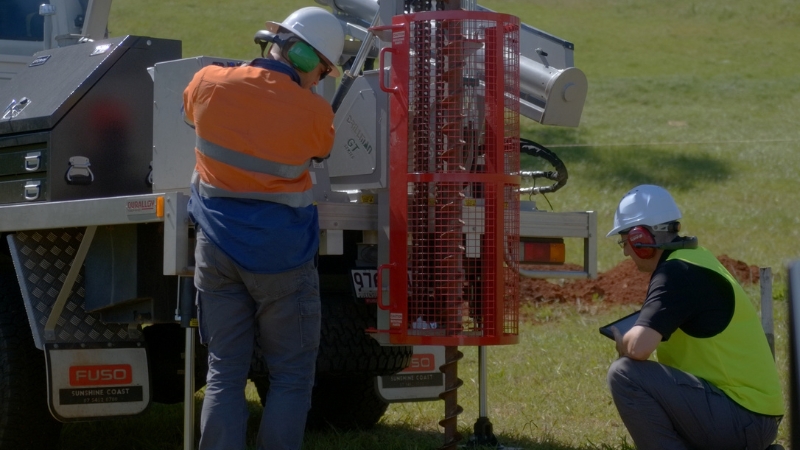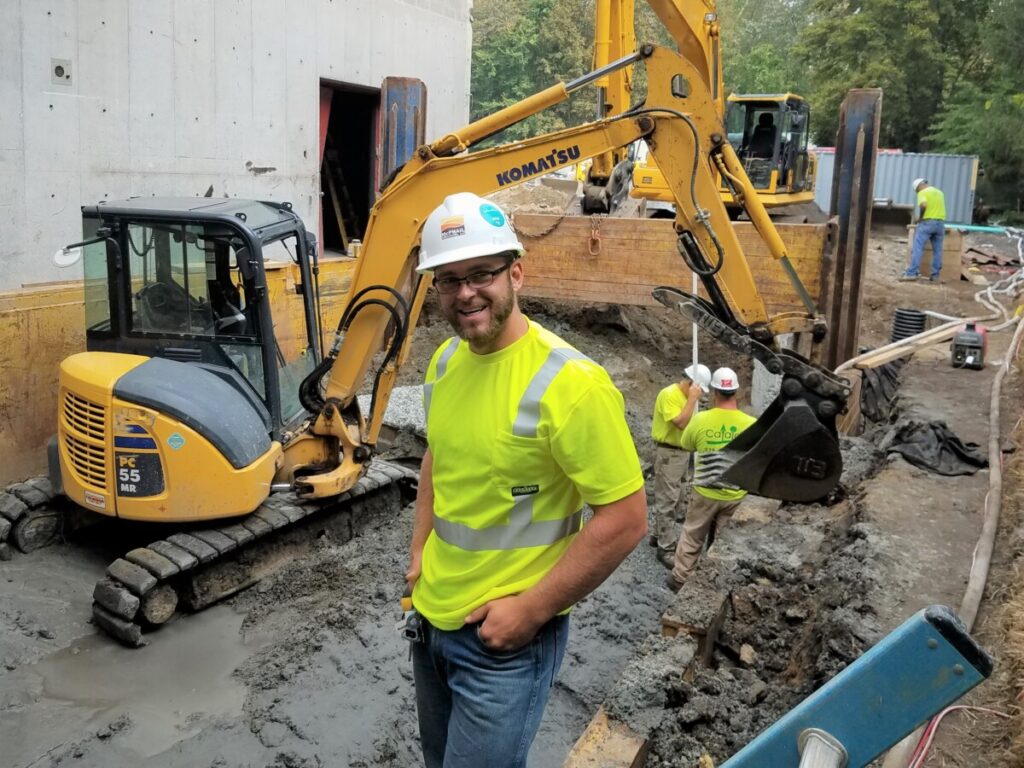Recognizing the Comprehensive Role of Geotechnical Designers in Ground Investigation and Dirt Analysis for Construction Jobs
Geotechnical engineers are important to the success of construction jobs, providing necessary insights via detailed ground investigations and dirt evaluation. Their competence in analyzing dirt behavior and utilizing advanced screening strategies notifies essential decisions that maintain architectural integrity and security. By teaming up and recognizing potential dangers with multidisciplinary groups, these professionals substantially affect project results, consisting of efficiency and cost-effectiveness. The details of their role typically prolong past these features, triggering a much deeper expedition right into the methods they use and the effects of their findings on total task stability.
Duty of Geotechnical Designers
The critical role of geotechnical designers in building and construction jobs can not be overstated, as they provide essential understandings into soil actions and website conditions. These professionals are entrusted with analyzing the viability of the ground for various kinds of frameworks, guaranteeing safety and security throughout the building and construction process. Their knowledge encompasses a large variety of tasks, including website characterization, soil tasting, and lab screening, which are essential for establishing the mechanical and physical buildings of the soil.
Geotechnical designers utilize their searchings for to establish fundamental styles that accommodate load-bearing needs and reduce threats associated to dirt slope, settlement, and liquefaction security. They play an essential function in recognizing potential hazards, such as groundwater variations and contamination, which can considerably affect project practicality. They team up with architects, civil engineers, and specialists to ensure that geotechnical considerations are incorporated right into the total layout and construction phases.
Ground Investigation Methods
Ground examination techniques form the backbone of geotechnical design, making it possible for designers to gain a detailed understanding of subsurface problems. These strategies are essential for evaluating dirt buildings, determining groundwater levels, and identifying prospective geological dangers.
Usual approaches consist of borehole exploration, which permits the removal of dirt samples at different depths, providing essential data for analysis. In addition, in situ screening methods, such as Common Infiltration Tests (SPT) and Cone Penetration Examinations (CPT), are used to review dirt stamina and density directly in the ground.
Geophysical approaches additionally play a considerable role in ground examinations. Methods such as seismic studies and electric resistivity tomography assistance evaluate subsurface characteristics without considerable excavation. geotech engineer. These non-invasive techniques are particularly valuable in delicate or large areas where disturbance should be decreased
Moreover, exploratory trenches can be excavated to visually evaluate soil layers and recognize any type of abnormalities. Each of these methods adds distinct understandings, allowing geotechnical engineers to create precise website assessments and notify design choices. In recap, a combination of these ground examination techniques is crucial for successful building tasks, guaranteeing safety and security and structural stability.
Dirt Analysis Approaches
Soil analysis approaches are crucial for recognizing the physical and chemical properties of soil, which straight affect the design and building and construction of foundations and other frameworks. Numerous techniques are utilized to examine dirt characteristics, guaranteeing that geotechnical designers get precise information for educated decision-making.
One commonly used method is grain size evaluation, which figures out the circulation of fragment dimensions within a soil example. This is important for categorizing dirt kinds and forecasting their actions under lots. An additional essential technique is Atterberg limitations screening, which evaluates the plasticity and moisture material of fine-grained soils, supplying understandings right into their design buildings.

Area tests, such as Conventional Penetration Examinations (SPT) and Cone Penetration Tests (CPT), deal important in-situ information regarding dirt toughness and stratification. Collectively, these dirt evaluation techniques create the foundation of geotechnical examination, allowing engineers to create safe and efficient article source structures tailored to the certain conditions of the site.
Risk Reduction Strategies
Executing reliable threat reduction strategies is necessary for geotechnical designers to address potential difficulties in building and construction projects. These approaches are vital in determining, examining, and taking care of risks associated with soil conditions, site stability, and groundwater changes, which can negatively influence project end results.
One primary strategy entails carrying out detailed site investigations that make use of sophisticated geophysical strategies and detailed dirt tasting. By obtaining accurate data on subsurface problems, engineers can make enlightened choices on design and building and construction methods. Additionally, using anticipating modeling devices enables the simulation of different scenarios, enabling designers to predict possible issues and execute safety nets.
Additionally, establishing clear interaction networks amongst task stakeholders cultivates a collective approach to risk management. Regular updates and consultations make certain that all celebrations know the evolving website conditions and can adjust their methods appropriately.

Impact on Construction Tasks
The effectiveness of threat reduction approaches straight affects the total success of building jobs. Geotechnical engineers play a critical role in this domain, as their competence in ground investigation and soil analysis informs critical choices throughout the building and construction procedure. By precisely evaluating soil problems and recognizing prospective risks, these professionals enable project teams to create reliable remedies that minimize dangers connected with ground instability, water seepage, and other geotechnical challenges.
The influence of thorough geotechnical evaluation appears helpful site in different aspects of building and construction jobs, including price administration, project timelines, and architectural stability. Early identification of concerns permits timely treatments, lessening costly hold-ups and budget plan overruns. An extensive understanding of site problems enhances the style and design procedure, ensuring that structures are constructed to endure ecological pressures and prospective all-natural catastrophes.
Inevitably, the contributions of geotechnical designers are integral to the successful implementation of construction jobs. Their job not only cultivates safety here and compliance with guidelines but also boosts the long-term sustainability of structures, making sure that they execute effectively throughout their designated life-span. The cooperation between geotechnical teams and various other stakeholders is vital for attaining optimum results in building and construction endeavors.
Final Thought
To conclude, geotechnical designers perform a vital feature in building and construction projects through detailed ground examinations and dirt evaluations. Their knowledge in analyzing dirt actions, employing various investigation techniques, and executing risk mitigation techniques substantially adds to the structural stability and security of developed atmospheres. By working together with multidisciplinary teams, these experts improve project efficiency and ensure compliance with safety and security criteria, inevitably causing effective building outcomes and reduced potential hazards.
Geotechnical designers are important to the success of building jobs, offering important understandings via thorough ground investigations and soil evaluation.The essential function of geotechnical engineers in construction tasks can not be overemphasized, as they supply important understandings right into soil actions and site conditions. Their proficiency incorporates a wide array of tasks, including website characterization, soil tasting, and lab testing, which are critical for figuring out the mechanical and physical properties of the dirt.
By accurately analyzing dirt problems and determining potential threats, these professionals make it possible for project groups to develop reliable services that lower dangers linked with ground instability, water infiltration, and various other geotechnical challenges.
In final thought, geotechnical designers carry out a crucial feature in building and construction jobs via extensive ground examinations and dirt analyses.